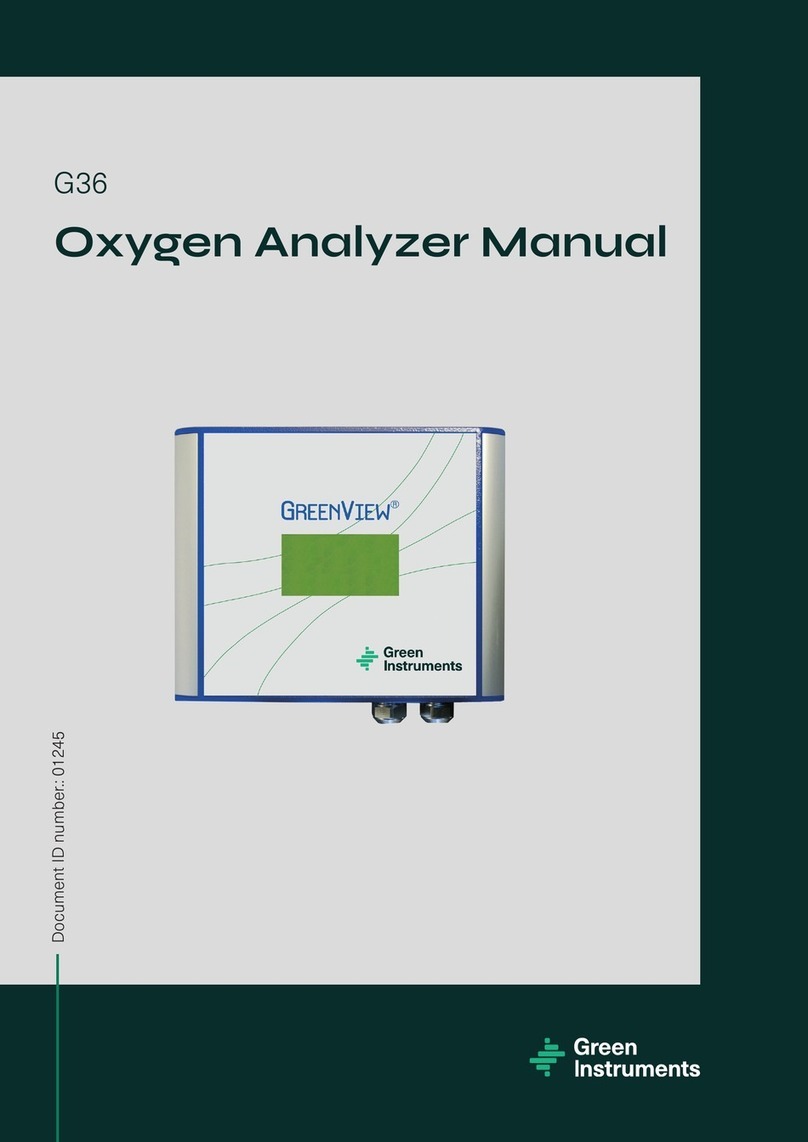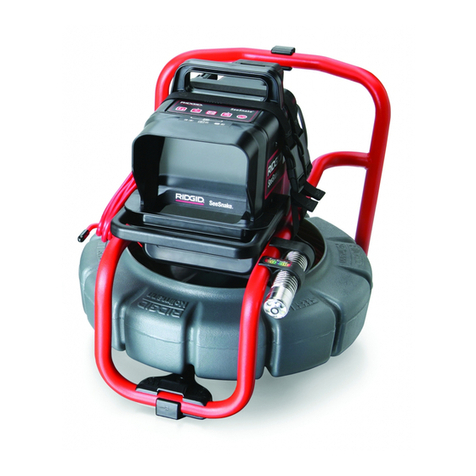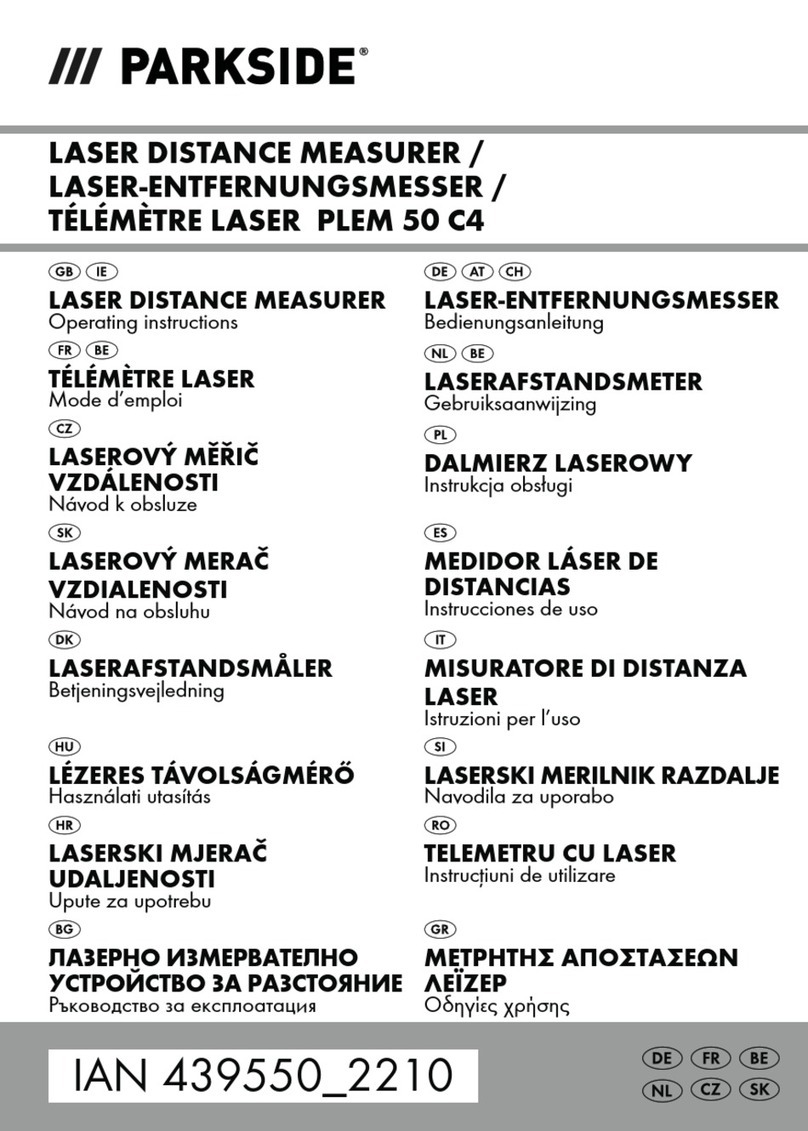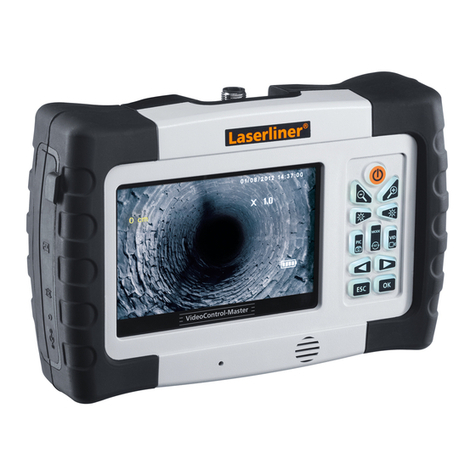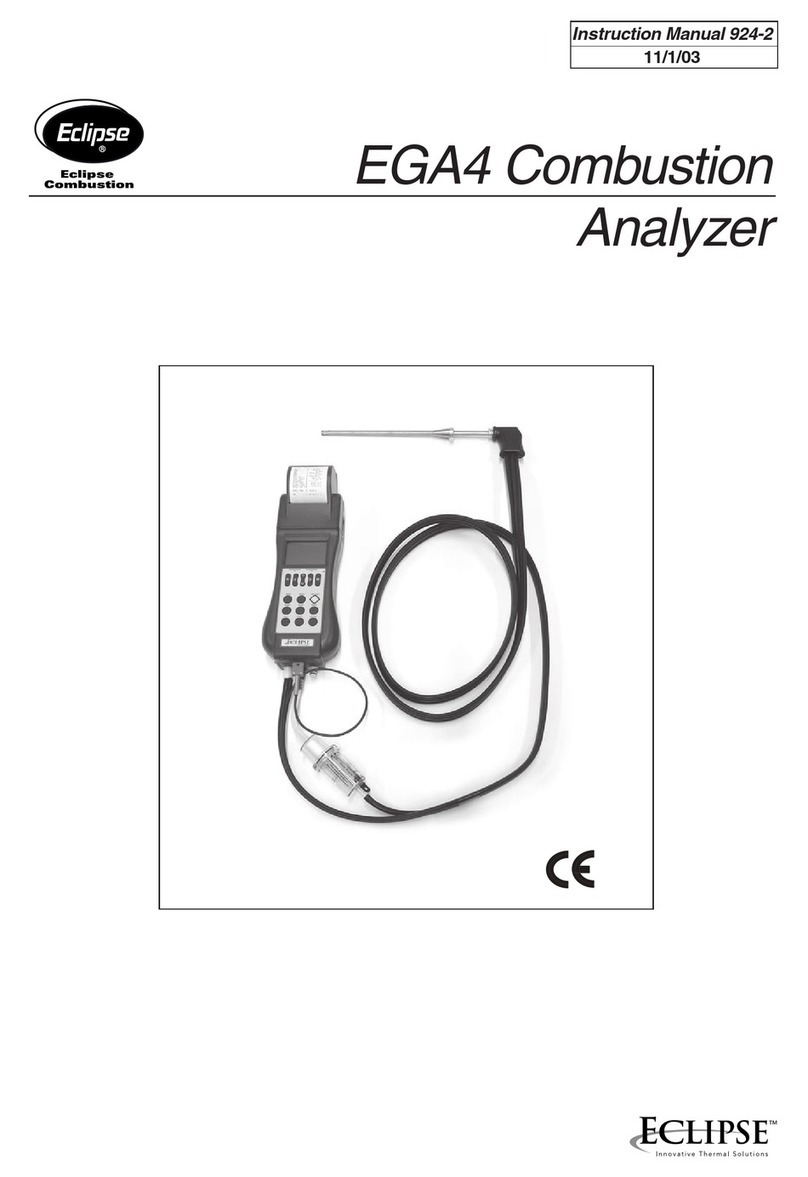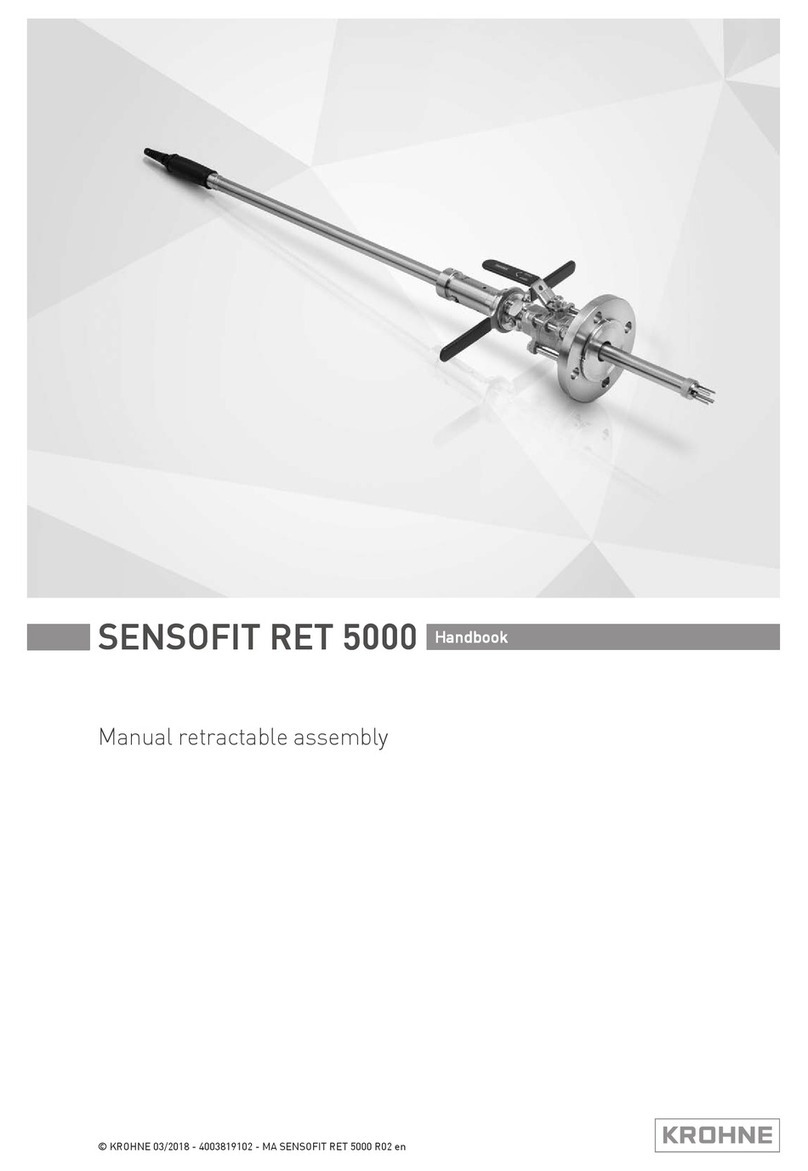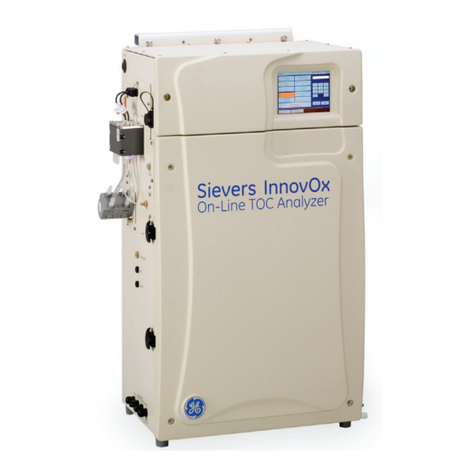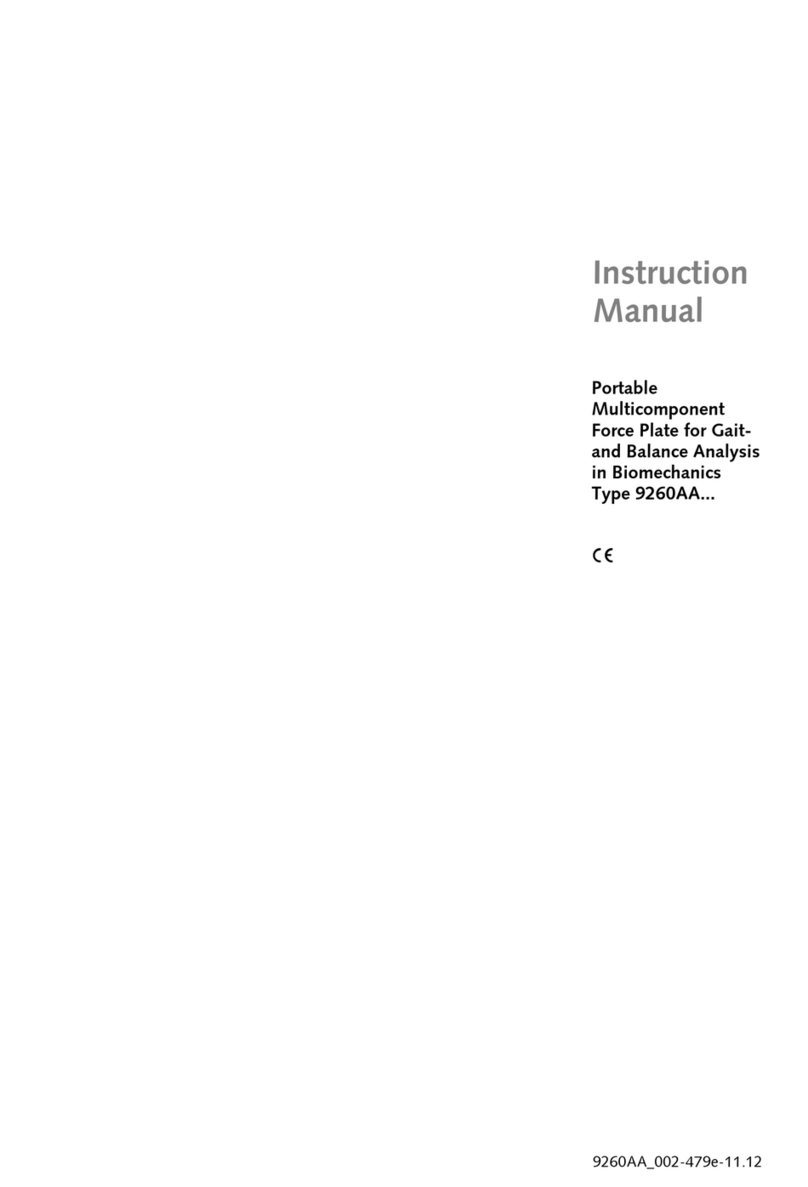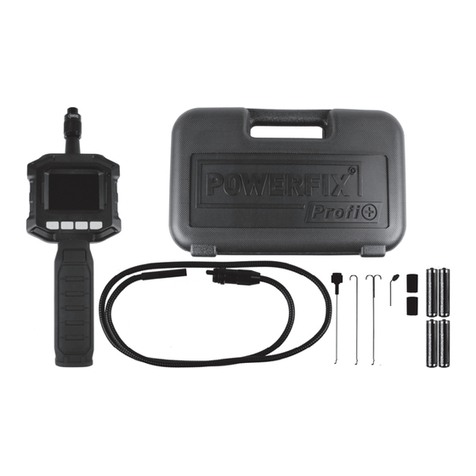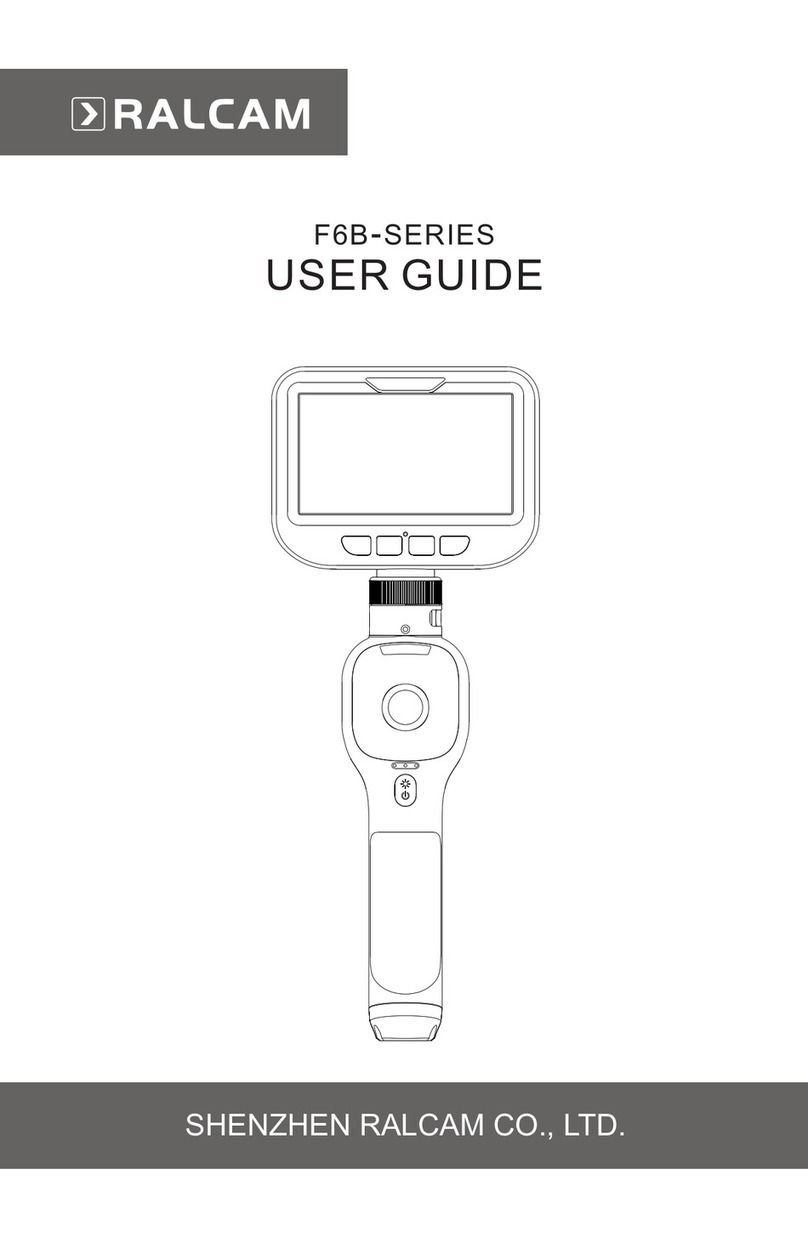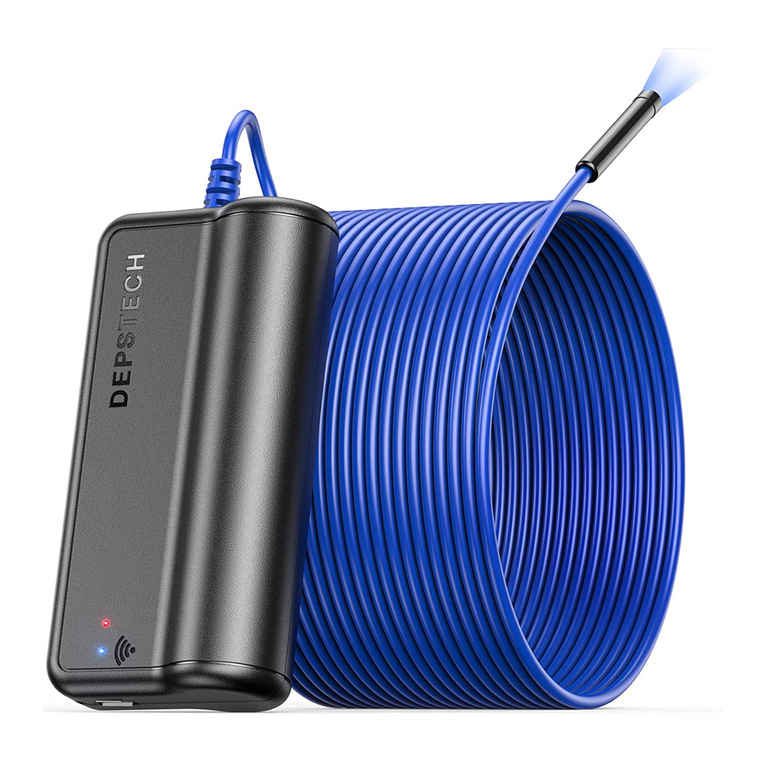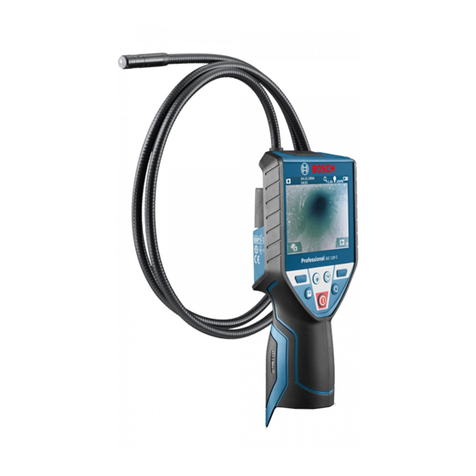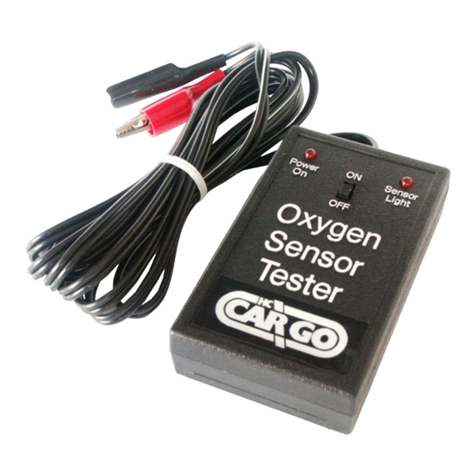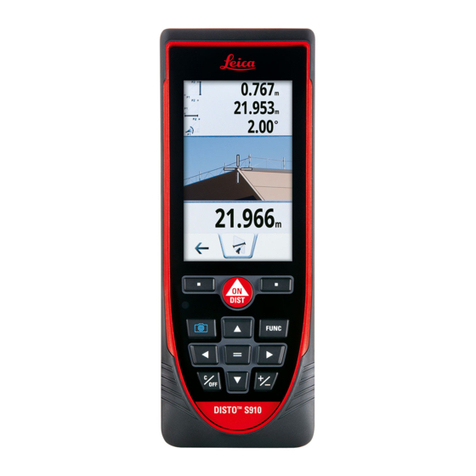GREEN INSTRUMENTS G26 User manual

G26
Ex Opacity System
Instruction Manual
Document ID number.: 103520

Page 2 of 56

Ex-Opacity G26 System
Ver.2.1 – Revision March 2022 Page 3 of 56
Content
1INTRODUCTION .............................................................................................6
1.1 ABOUT THIS MANUAL .....................................................................................................6
1.2 INQUIRIES AND FEEDBACK ..............................................................................................7
1.3 ABOUT THE SYSTEM ......................................................................................................7
1.3.1 System Components ...................................................................................8
1.3.2 Additional Components ...............................................................................8
2SPECIFICATIONS ...........................................................................................9
3SAFETY ASPECTS ....................................................................................... 11
4CONTROL AT DELIVERY ...............................................................................13
5INSTALLATION.............................................................................................14
5.1 SYSTEM OVERVIEW .....................................................................................................14
5.2 CONTROL AND MONITORING UNIT .................................................................................15
5.3EX INTERFACE CABINET WITH INTRINSIC SAFETY BARRIERS...........................................15
5.4 EX JUNCTION BOX .......................................................................................................15
5.5 TRANSCEIVER AND REFLECTOR ....................................................................................15
5.5.1Mounting Brackets .....................................................................................16
5.5.2 Choosing Installation Location...................................................................17
5.6 ELECTRICAL CONNECTIONS..........................................................................................17
5.6.1 Connections...............................................................................................17
5.6.2 Cable .........................................................................................................17
5.7 CHOOSING THE RIGHT ALARM LEVELS – OPACITY OF OIL MIST..........................................18
6TRANSCEIVER MENU STRUCTURE ................................................................19
6.1 TRANSCEIVER BUTTON FUNCTION ................................................................................19
6.2 CHOOSE TRANSCEIVER TYPE.......................................................................................20
6.3 SET LASER ALIGNING FUNCTION ..................................................................................22
6.4 SET UNIT ADDRESS .....................................................................................................23
6.5 CALIBRATION ...............................................................................................................25
6.5.1 Zero Calibration .........................................................................................25
6.5.2 Auto SPAN Calibration...............................................................................25
6.5.3 Manual Span Calibration ...........................................................................26
6.6 ENABLING SERVICE MODE ...........................................................................................27
7CONTROL AND MONITORING UNIT ................................................................29
7.1 HOME MENU ...............................................................................................................29
7.2 TRANSCEIVER MENU....................................................................................................30

Content
Page 4 of 56
7.3 ALARM LIST MENU ......................................................................................................31
7.4 TREND MENU..............................................................................................................34
7.5 TRANSCEIVER SETUP ..................................................................................................34
7.6 SYSTEM SETUP...........................................................................................................36
8COMMISSIONING ......................................................................................... 38
8.1 START OF THE SYSTEM................................................................................................ 38
8.2 CALIBRATION ..............................................................................................................38
8.3 SETTING OF ALARM LEVELS......................................................................................... 38
8.4 SETTING OF SIGNAL OUTPUTS .....................................................................................38
9MAINTENANCE ........................................................................................... 39
9.1 GENERAL ...................................................................................................................39
9.2 MAINTENANCE INSTRUCTION .......................................................................................40
10 TROUBLESHOOTING....................................................................................41
11 SPARE PARTS ............................................................................................ 43
12 APPENDIX OF EX-OPACITY TRANSCEIVER G16/G26 ..................................... 46
12.1 ABOUT THIS APPENDIX ................................................................................................46
12.1.1 Labeling.....................................................................................................46
12.2 TYPE APPROVAL STANDARDS ......................................................................................48
12.3 WARNING ...................................................................................................................48
12.4 SAFETY USE ...............................................................................................................48
12.4.1 Notes on Safe Use of the ATEX and IECEx Approved Equipment ...........48
12.5 INSTALLATION..............................................................................................................49
12.5.1 Installation Requirements .........................................................................49
12.5.2 Protective Earth ........................................................................................49
12.5.3 Installation Examples ................................................................................50
12.6 MOUNTING, COMMISSIONING, AND OPERATION .............................................................50
12.6.1 Explosive Hazardous Area........................................................................51
12.6.2 Special Conditions for a Safe Use ............................................................51
12.7 MAINTENANCE ............................................................................................................51
12.7.1 External Maintenance ...............................................................................51
12.7.2 Overhaul and Repair.................................................................................51
12.8 CLASSIFICATION..........................................................................................................51
12.8.1 Zone Classification....................................................................................52
12.8.2 Gas Grouping............................................................................................52
12.8.3 Dust Grouping ...........................................................................................52
12.8.4 Temperature Classification........................................................................ 52
12.9 ACCESSORIES ............................................................................................................53

Ex-Opacity G26 System
Ver.2.1 – Revision March 2022 Page 5 of 56
12.9.1 Connection Cable ......................................................................................53
12.9.2 Transceiver Mounting Module G26 ...........................................................53
12.9.3 Reflector Module G16................................................................................53
12.9.4 Reflector Module G26................................................................................53
12.9.5 Air Module G16/G26 ..................................................................................53
12.9.6 Junction Box ..............................................................................................53
12.10 SPARE PARTS..............................................................................................................53
TABLE OF FIGURES
FIGURE 5-1: EX OPACITY G26 SYSTEM COMPONENT OVERVIEW ..............................................................................................................14
FIGURE 5-2: MOUNTING POSITION OF THE TRANSCEIVER AND THE REFLECTOR .......................................................................................... 16
FIGURE 5-3: OPACITY VERSUS PATH LENGTH FOR DIFFERENT CONCENTRATION (CALCULATED FOR OIL DROPLETS OF 10…20µM). ...................18
FIGURE 6-1: TRANSCEIVER INTERFACE ...................................................................................................................................................19
FIGURE 6-2: ILLUSTRATION OF THE STRONGEST SIGNAL →NO OBSTRUCTIONS TO THE LIGHT BEAM .............................................................. 19
FIGURE 6-3: ILLUSTRATION OF THE WEAKEST SIGNAL →OBSTRUCTIONS TO THE LIGHT BEAM ....................................................................... 20
FIGURE 6-4: SELECT CONFIGURE MENU ................................................................................................................................................. 20
FIGURE 6-5: THE CONFIG MENU WILL HAVE THE RIGHT MOST SIGNAL STRENGTH LED TURNED ON (TRANSCEIVER TYPE MENU).......................21
FIGURE 6-6: TRANSCEIVER TYPE MENU TURNED ON................................................................................................................................. 21
FIGURE 6-7: TRANSCEIVER TYPE WHERE ALARMS ARE BASED ON ABSOLUTE OPACITY .................................................................................. 21
FIGURE 6-8: SAVE SETTINGS AND RETURN TO NORMAL OPERATION MODE ................................................................................................22
FIGURE 6-9: ILLUSTRATION OF POOR AND GOOD ALIGNMENT ....................................................................................................................23
FIGURE 6-10: TRANSCEIVER ADDRESS SETTINGS .................................................................................................................................... 24
FIGURE 6-11: AUTO SPAN CALIBRATION READY TO START AFTER THE ZERO CALIBRATION IS COMPLETE........................................................... 25
FIGURE 6-12: SIGNAL STRENGTH LEDS INDICATE SUCCESSFUL AUTO SPAN CALIBRATION ......................................................................... 26
FIGURE 6-13: TRANSCEIVER IN NORMAL OPERATION MODE ......................................................................................................................27
FIGURE 6-14: SIGNAL STRENGTH LEDS SHOWING WHEN TO RELEASE ZERO TO ENTER SERVICE MODE ...................................................... 27
FIGURE 6-15: SERVICE MODE (FLASHING WARNING LED)......................................................................................................................... 28
FIGURE 6-16: SERVICE MODE (1 SIGNAL STRENGTH LED REPRESENTS 10 MINUTES ADDED TO DEFAULT SERVICE MODE)............................. 28
FIGURE 6-17: THE SERVICE MODE TIMER INDICATION MAX 60 MINUTES ..................................................................................................... 28
FIGURE 7-1: HOME MENU WITH 1CONFIGURED TRANSCEIVER ..................................................................................................................29
FIGURE 7-2: HOME MENU WITH 2CONFIGURED TRANSCEIVERS ................................................................................................................29
FIGURE 7-3: SENSOR MENU................................................................................................................................................................... 30
FIGURE 7-4: ALARM LIST MENU ............................................................................................................................................................... 31
FIGURE 7-5: SELECT AN ALARM IN THE ALARM LIST MENU ........................................................................................................................ 31
FIGURE 7-6: ALARM INFO SCREEN -E.G.NOT ALIGNED ALARM ..................................................................................................................32
FIGURE 7-7: TREND MENU ..................................................................................................................................................................... 34
FIGURE 7-8: PASSWORD POPUP WINDOW ................................................................................................................................................34
FIGURE 7-9: TRANSCEIVER SETUP.......................................................................................................................................................... 35
FIGURE 7-10: SYSTEM SETUP ................................................................................................................................................................ 36
FIGURE 12-1: INSTALLATION EXAMPLES .................................................................................................................................................. 50

Introduction
Page 6 of 56
1Introduction
1.1 About this Manual
This manual contains data and instructions for the installation, operation, and maintenance
of the Ex Opacity G26 system.
The main sections of the manual describe the general specifications, usage, maintenance,
installation and commissioning instructions, whereas the appendix in section 12 focuses
on details concerning Ex Safety.
The instructions are given in general terms and do not take into consideration a specific
installation. The figures used in the manual are only for general illustration purposes. This
manual is designed for the Ex Opacity G26 system delivered by Green Instruments A/S.
Note that each Ex Opacity G26 system is delivered with a default configuration from the
factory. Therefore, please study this manual and the Technical Drawings for each system
in their entirety for the operation of the system.
This manual does not describe all possible situations, but only the most common and
known situations. It cannot replace the necessary education and training of the personnel.
Should situations not described in this manual occur the operator should contact Green
Instruments A/S for instructions.
Attention
Before operation, read section 12 Appendix of Ex Opacity Transceiver , all instructions
and warnings within this manual and associated documentation.
Improper use may cause personal injury and/or damage of equipment and may void
the warranty. Green Instruments A/S disclaims any responsibility for damage and/or
injury caused by improper installation, use or maintenance of the equipment.
Green Instruments A/S reserves the right to minor alterations and improvements owing to
developments without being obliged to enter the corresponding changes in this manual.
Green Instruments A/S reserves the copyright of the manual. Without prior written permis-
sion of Green Instruments A/S, the manual may not be copied and given to unauthorized
people.

Ex-Opacity G26 System
Ver.2.1 – Revision March 2022 Page 7 of 56
1.2 Inquiries and Feedback
All claims and inquiries for spare parts shall be addressed to Green Instruments A/S or our
distributors. In all correspondence, or when ordering spare parts, please carefully state the
equipment type and serial number, which can be found on the label on the equipment.
Green Instruments A/S appreciates all feedback and suggestions for improvement. If any
questions appear or any discrepancies are found in this manual, kindly contact Green
Instruments:
Green Instruments A/S
Erhvervsparken 29
DK-9700 Brønderslev, Denmark
Phone: +45 9645 4500
Fax: +45 9645 4501
E-mail: [email protected]
Web: www.greeninstruments.com
1.3 About the System
The Ex Opacity G26 system is designed to detect small concentrations of oil mist in open
spaces and provide an early fire or explosion hazard warning.
The transceiver sends out a light beam with specific spectral characteristics that is projected
across the space to be monitored for oil mist leakage. The transceiver emits light that passes
through the space where it hits the reflector positioned opposite to the transceiver
The reflector returns the light to the transceiver and the transceiver detects the returned
amount of light. The transceiver compares the returned light with a reference light intensity
obtained during zero calibration. If the intensity of the returned light is reduced, then this
is an indication of oil mist or other particulate matters in the detected space. Based on this,
a warning or an alarm is given.
Please note that besides reacting to oil mist, the transceiver will also react to other
obstructions intercepting the light beam e.g. smoke and water mist. Consequently, an alarm
might be triggered and depending on the application, this might be perceived as "a false
alarm". However, in this scenario, such an alarm will typically indicate another type of
malfunction that would require attention.

Introduction
Page 8 of 56
1.3.1 System Components
As a standard configuration, the Ex Opacity G26 system consists of the following standard
elements:
Control and Monitoring Unit
The control and monitoring unit is arranged with a touchscreen, connection terminals and
cable glands. The control and monitoring unit can be configured to monitor up to 2 trans-
ceivers.
Transceiver/Reflector Unit
The transceiver contains the laser source, optical components, electronics and data proces-
ser capacity to control and shape the laser beam projected across to the reflector. The trans-
ceiver is mounted in the Ex Opacity Transceiver Mounting module G26 for easy installa-
tion.
The Ex Opacity G26 system is delivered with a standard 15m Ex connection cable. The
reflector reflects the light back to the Transceiver where the light attenuation is measured.
The reflector module contains a precision reflector to direct the light beam back to the
transceiver.
1.3.2 Additional Components
•Ex Junction Box (JB) can be used in the Ex Zone to connect customer supplied cables
with the cable used to connect to the transceiver.
•Ex Interface Cabinet with intrinsic safety barriers for power supply and communication
between the monitor unit and the transceiver.

Ex-Opacity G26 System
Ver.2.1 – Revision March 2022 Page 9 of 56
2Specifications
Control and Monitoring Unit
Power Supply Input
Option 1: 100…240 VAC –50/60 Hz –1.4 A
Option 2: 20…30 VDC –2 A
Ambient Temperature
0…55°C
Communication Options:
(All included as Standard)
Analog output:
2 x 4…20 mA max. 500 Ω - (active & linearized)
Digital output: 4 x Alarm Relays
Bus: Modbus TCP/IP
Alarm Levels
Alarm level is configurable
Warning level is default set at 50% of Alarm level
Alarm Delay
Default 0 s
(Programmable 0…1800 s)
Display
Opacity level [%]
Accuracy
≤ 1 % of full scale for distance 0.5…9.0m
≤2 % of full scale for distance 9.0…15.0m
Dimensions/Weight
Refer to Installation Layout
Enclosure
IP 65 Steel box
Transceiver
Measurements
Opacity
Measuring Principle
Transmission double pass
Measuring Range (FS)
0…100% Opacity
Accuracy
+/-1% of full scale (FS) for 0,5…9.0 m
+/-2% of full scale (FS) for 9.0…15.0 m
Scanning Distance
Optimal: 2.0…9.0 m
Possible: 1.0…15.0 m
Power Supply
24 VDC +/- 10%
Communication Interface
Modbus RTU server
Ambient Temperature
-25…55°C
(For Ex-application according to IEC 60079-0)
Class C
-25…45°C (For Marine application)
Humidity
Above dew point
Vibration
Class B
EMC
Class A (EN 61326-1 Table 2)

Specifications
Page 10 of 56
Enclosure
Class B/IP 54
Dimensions & Weight
Refer to Installation Layout
Materials
SS316
Reflector
Ambient Temperature
-25…55°C (For Ex-application according to IEC 60079-0)
Class A
5…45°C (For Marine application)
Humidity
Above dew point
Vibration Class
Class B
Enclosure Class
Class B/IP 54
Dimensions & Weight
Refer to Installation Layout
Materials
EN-AW 6082, Acryl Reflector
Optional Equipment (refer to spare part)
Ex Interface Cabinet
Protection Method
Ex ib (connections to Ex Zone)
Material
Steel
Enclosure Class
IP 54
Intrinsic Safe Power Supply
Uo = 23.6V, Io = 176.4 mA, Po = 1038 mW, Co = 0.97 uF,
Lo = 4.5 mH
Intrinsic Safe
Communication Interface
Uo = 3.7V, Io = 93 mA, Po = 85 mW
Ex Junction
Protection Method
Ex e
Cable to Transceiver
Ex Junction box is delivered with 15m pre-configured cable
for easy connection to the Transceiver.
Materials
Fiberglass Reinforced Polyester (FRP)
Enclosure Class
IP 54
Audit Targets
100, 22 & 8 % Opacity (+/÷ 2% of full range)
Useable for field validation
Only use in Ex zone when Ex zone is safe.
Approvals and Certificates
Download all product certificates at https://greeninstruments.com/

Ex-Opacity G26 System
Ver.2.1 – Revision March 2022 Page 11 of 56
3Safety Aspects
Attention
Concerning the Ex-Safety refer to section 12.4 Safety Use.
WARNING!
Follow the installation and operating instructions. Please read the instructions carefully in
its entirety before working on the system.
Warning!
Hazardous Voltage: Disconnect power before servicing the system. Ignoring this warning
can result in severe personal injury or material damage. Observe the instructions carefully
to ensure the correct connection of all power and signal leads.
Ensure that the correct power supply is connected to the control and monitoring unit (see
the rating marked on the label of the equipment).
Circuit breaker!
The installation must include a means of switching off electrical power by a clearly marked
switch or circuit breaker external to the control and monitoring unit. The external switch
or circuit breaker must be placed in close proximity to the monitoring unit and within reach
of the operator.
Overload protection!
To comply with safety requirements IEC 61010-1 (2003), the installation must include a
means of overcurrent protection to protect against excessive energy being drawn from the
power supply system in case of a fault in the equipment.
Protective earth!
The monitoring unit must be connected to protective earth.
Installation and fault finding!
Electrical installation and fault finding on the system should only be undertaken by a suit-
able trained and qualified engineer.
Warning Laser Hazard
Visible laser radiation! Avoid eye exposure to direct or scattered radiation.

Safety Aspects
Page 12 of 56
Symbol Identification
Caution, risk of danger
Caution, risk of electrical shock
Warning Laser Hazard. Visible laser radiation! Avoid eye exposure to direct or
scattered radiation.
Protective earth
The CE mark proves the compliance of the instrument with the requirements of
the relevant EU directives

Ex-Opacity G26 System
Ver.2.1 – Revision March 2022 Page 13 of 56
4Control at Delivery
Upon receipt of the Ex Opacity G26 system, please control that the received items are in
accordance with the packing list and not damaged. Any discrepancy should be reported to
the supplier immediately.
If any of the received parts are damaged, the shipping company should be informed, and
new parts made available before completing the installation.

Installation
Page 14 of 56
5Installation
Read this chapter in its entirety before installing the system.
Attention
Concerning installation requirements for Ex areas refer to section 12.5.
5.1 System Overview
Refer to Ex Opacity G26 System Component Overview drawing.
Figure 5-1: Ex Opacity G26 System Component Overview
Note
Ex Junction box in the position 3 is only required if the cable length between the po-
sition 2 and 5 exceeds 15m. To order the cable - refer to Spare Parts section 11 – part
number 03457.

Ex-Opacity G26 System
Ver.2.1 – Revision March 2022 Page 15 of 56
5.2 Control and Monitoring Unit
The control and monitoring unit can interface with up to 2 transceiver/reflector units. It is
recommended to install the control and monitoring unit in an easily accessible location.
The control and monitoring unit is arranged with touch screen and connection terminals
inside the unit.
Five (5) cable glands (M20) are arranged for incoming and outgoing power and data cables.
The M20 cable glands are suitable for cable diameters between 7 mm to 13 mm.
Refer to Monitor Unit drawing.
5.3 Ex Interface Cabinet with Intrinsic Safety Barriers
Ex Interface Cabinet can interface with 1 transceiver and 1 reflector unit. The purpose of
the cabinet is to interface between Safe zone and Ex zone. The cabinet includes intrinsic
safe power supply and intrinsic safe communication barriers.
The Interface Cabinet with intrinsic safety barriers is an optional item offered by Green
Instruments. Safety Barriers which correspond to the system is a necessity for Ex compli-
ance, however it can be supplied by the customer, at the customers own risk. The safety
barriers must respect Ex safety in all manners, when connected to the Ex Opacity G26
System. Refer to Ex Interface Cabinet drawing.
5.4 Ex Junction box
The Ex Junction box is an optional item used in cases where the cable between the Ex
Interface Cabinet and the Transceiver exceeds 15 meters
If the scope of supply includes an Ex Junction box, the Ex Junction box is pre-mounted
with a 15m pre-configured connection cable for easy connection to the transceiver.
The connection terminals are located in the Ex Junction box. 2 free cable glands (M20) are
arranged for incoming power and communication. The M20 cable glands are suitable for
cable diameters between 7mm to 13mm.
Refer to Ex Junction box drawing.
5.5 Transceiver and Reflector
The Ex Opacity Transceiver G26 system can consist of up to 2 transceivers (i.e. trans-
ceiver/reflector units). The transceiver and reflector must be properly aligned, mounted
firmly and stable with a line of sight opposite each other.

Installation
Page 16 of 56
The transceiver and reflector are mounted into the mounting brackets. Refer to Trans-
ceiver/Reflector Installation Layout drawing and section 5.5.1.
Attention
Make sure the transceiver and reflector are mounted precisely centered and directly
opposite each other.
It is possible to adjust the direction of the transceiver and reflector to ensure alignment.
The transceiver and reflector must be protected from UV radiation e.g. from direct sunlight,
since UV radiation can damage labels and operator interface. It is recommended to protect
the transceiver and reflector from water e.g. rain. Both UV and water protection could be
simply achieved by making weather cover above the transceiver and reflector.
5.5.1 Mounting Brackets
The equipment must be installed onto a solid structure to ensure stability due to local vi-
brations. If mounted onto structures thinner than 6 mm, it is recommended to reinforce
such structures e.g. by fitting purpose-built brackets. A robust installation is vital for opti-
mal system functionality. Refer to Transceiver/Reflector Installation Layout drawing.
In order to avoid false alarms caused by people walking in the monitoring area, it is rec-
ommended to mount the transceiver and reflector at a position higher than the normal
height of people if possible (see Figure 5-2).
Figure 5-2: Mounting Position of the Transceiver and the Reflector

Ex-Opacity G26 System
Ver.2.1 – Revision March 2022 Page 17 of 56
5.5.2 Choosing Installation Location
Installation location should be chosen based on the operator’s knowhow regarding the pro-
cess equipment to be monitored. A risk assessment could inform which equipment to mon-
itor or protect as well as reveal the needed numbers of detectors. Pay consideration to fac-
tors, that could act as sources of e.g., an oil leak/mist and also pay attention to blowers,
fans, ventilators etc. that could carry the mist from its source of generation to another lo-
cation. Ensure good and safe accessibility to the equipment whilst avoiding accidental
blocking of the light beam.
5.6 Electrical Connections
5.6.1 Connections
Before connecting the power supply, please make sure that the power supply rating for the
control and monitoring unit corresponds with the power supply available.
Please see the electrical drawings relevant for installation attached to each system.
5.6.2 Cable
Always consult the electrical documentation.
•Cables must meet marine standards for marine application.
•Cables in Ex zone must meet EN 60079-14 for Ex intrinsic safe Ex application.
•Laying of cables must be done according to good workmanship. Special consideration
must be taken to fixate the cable from the transceiver to avoid excessive stress on cable
and connector.
Attention
For cables always consult relevant standards, including, but not limited to:
•EN 60079-14 section 16.2.2.2
•Special attention regarding EN 60079-14 section 16.2.4.3 and the Transceiver la-
belling section 12.1.1. The system will have a total inductance and capacitance that
is greater than 1% of LO and CO, and thus the acceptable values for LO and CO shall
be half and the allowable cable inductance and capacitance adjusted accordingly.
For assessment of a simple intrinsically safe system, please refer to EN 60079-25 An-
nex A. Other assessments could also be necessary.

Installation
Page 18 of 56
5.7 Choosing the Right Alarm Levels –Opacity of Oil Mist
The alarm level must be adjusted to the lowest possible value without risk of generating
false alarms. The setting must ensure that lower explosion level is not exceeded without
generating an alarm.
The opacity of oil mist will depend on the concentration of oil mist, the size of oil droplets,
and the path length of the actual oil-mist cloud which intersects the light beam.
Regarding the size of oil droplets, in general, smaller oil droplets have lower ignition
temperatures due to the larger surface to volume ratios. Larger oil droplets are less
dangerous due to higher ignition temperatures. This corresponds well with the fact that
smaller droplets have a higher opacity effect and are thus easier to detect than larger
droplets.
In order to understand the relationship between opacity, oil mist concentration and the path
length of the oil mist, two fictive examples are given in Figure 5-3. The figure illustrates
different oil mist opacity levels corresponding with different oil concentrations and path
lengths for a fictive oil type with oil droplets ranging from 10…20 µm.
The figure shows that:
•An oil mist cloud with a concentration of only 0.2 mg/l and a path length of
approximately 2 meters will generate an opacity of approximately 10 %.
•For the concentration of 2.5 mg/l, a mist cloud intersecting the line of sight by only 25
cm will generate an opacity of approximately 16%.
Figure 5-3: Opacity versus path length for different concentration (calculated for oil droplets of
10…20µm).
0%
10%
20%
30%
40%
50%
60%
70%
80%
90%
100%
25 50 75 100 125 150 175 200 225 250 275 300 325 350 375 400
Path length in cm
Opacity in %
0.2 mg/l 1.0 mg/l 2.0 mg/l
2.5 mg/l 50 mg/l

Ex-Opacity G26 System
Ver.2.1 – Revision March 2022 Page 19 of 56
6Transceiver Menu Structure
Videos of Transceiver Setup and Transceiver Calibration can be found using the links
below. Kindly note that the videos are made as general guidelines.
https://greeninstruments.com/
6.1 Transceiver Button Function
Figure 6-1: Transceiver Interface
The transceiver user interface consists of a green power LED, a yellow warning LED and
a red alarm LED, a zero and a span button, and 5 signal strength LEDs.
•Power: Green illuminating LED means power ON
•Warning: Yellow illuminating LED means Transceiver issue or warning level exceeded
•Alarm: Red illuminating LED means suspected Oil Mist is present
•Signal Strength LEDs: Under normal operation, the signal strength LEDs indicate how
close the transceiver is to triggering the alarm.
•When the signal strength LED on the right illuminates, it indicates the transceiver is
far from triggering an alarm – refer to Figure 6-2.
•When the signal strength LED on the left illuminates, it indicates the transceiver is
close to triggering/ already triggered an alarm. Please See Figure 6-3.
Figure 6-2: Illustration of the strongest signal → no obstructions to the light beam

Transceiver Menu Structure
Page 20 of 56
•When the illumination changes to one of the LEDs to the left, it indicates that the re-
flected beam becomes weaker, i.e., the beam is scattered or blocked. The signal strength
LEDs can thus be used as a quick indication of how far the transceiver is from trigger-
ing an alarm. Please See Figure 6-3.
Figure 6-3: Illustration of the weakest signal → obstructions to the light beam
•Besides the indication of signal strength, the blue LEDs are also used as an indication
of correct initial alignment and address settings.
•Zero and Span: The Zero and Span buttons are used for calibration and initial settings
of light beam strength and transceiver address. These buttons are also used to enter
service mode.
6.2 Choose Transceiver Type
Attention
It is mandatory to select correct transceiver type on a new transceiver.
The transceiver can handle alarms based on an absolute opacity or based on sudden change
in opacity. For this application, it is mandatory to set the transceiver type. Alarms are based
on absolute opacity.
To select Config Menu press, hold the ZERO button until the 2 outer signal strength LEDs
light up in each side. When this is noticed, please immediately release ZERO, then press
and hold ZERO again until 2 outer signal strength LEDs light up in each side, then release
once this is noticed – Figure 6-4.
Figure 6-4: Select Configure Menu
Other manuals for G26
2
Table of contents
Other GREEN INSTRUMENTS Analytical Instrument manuals
